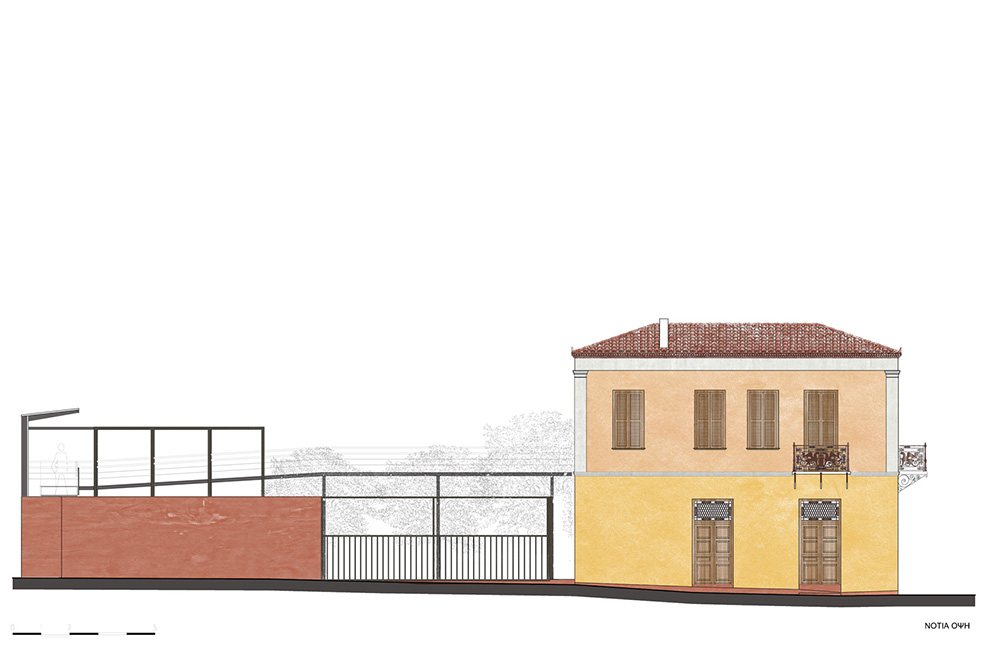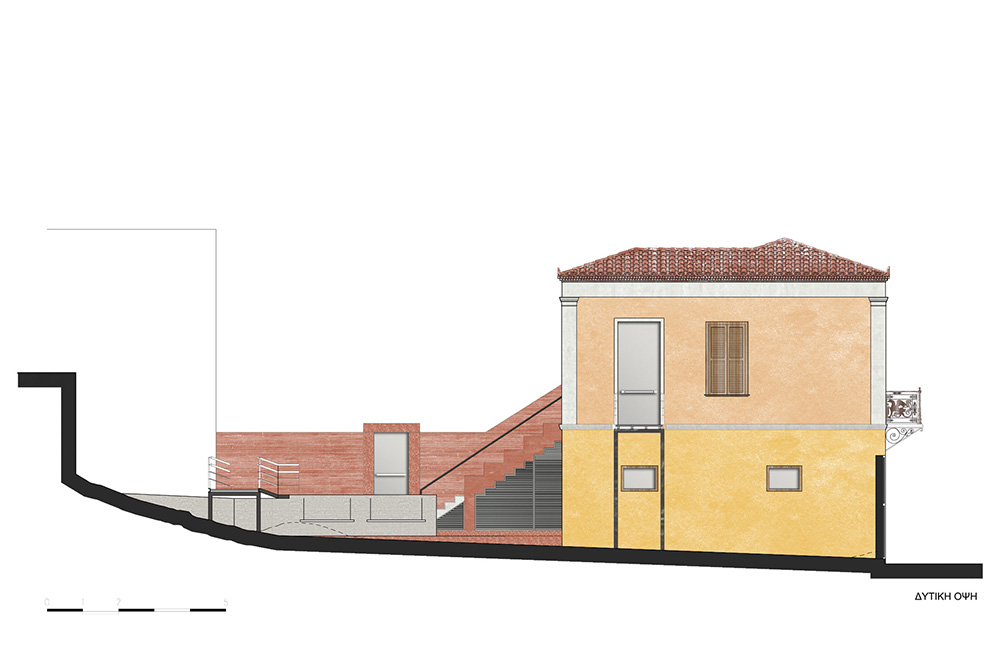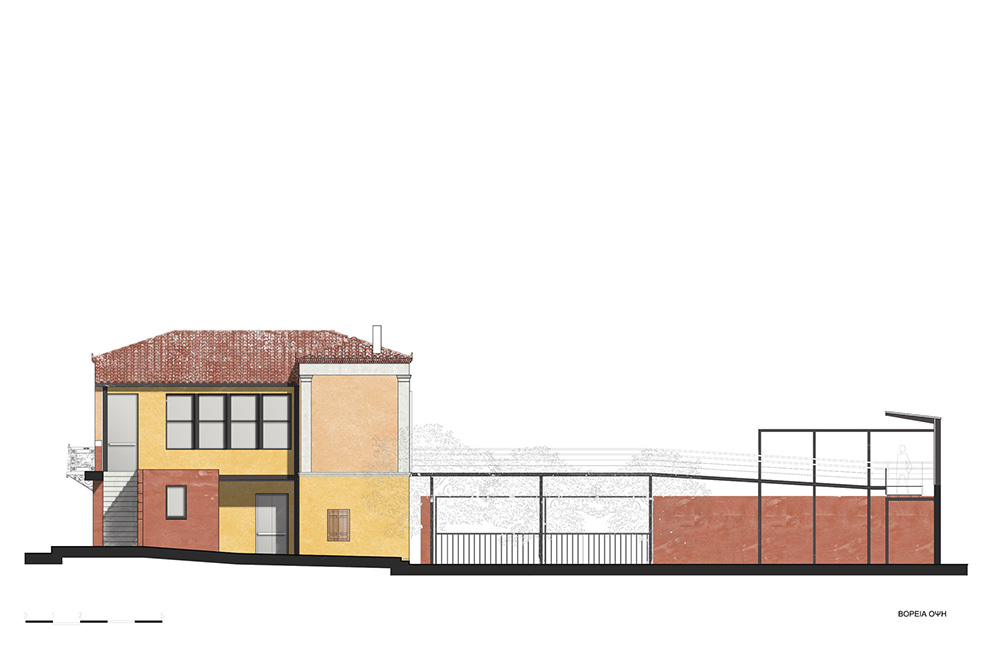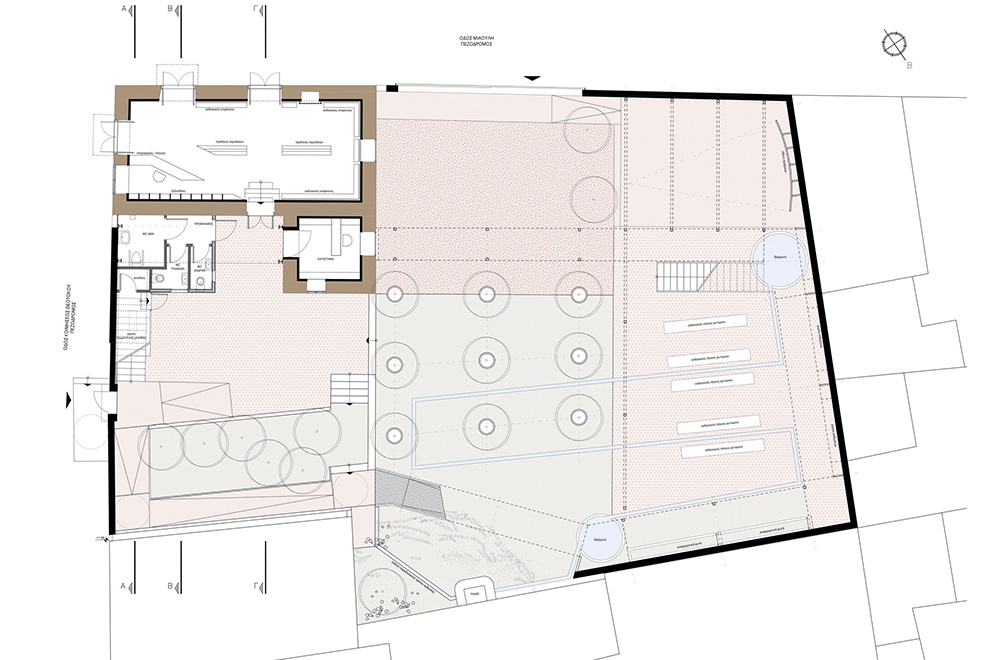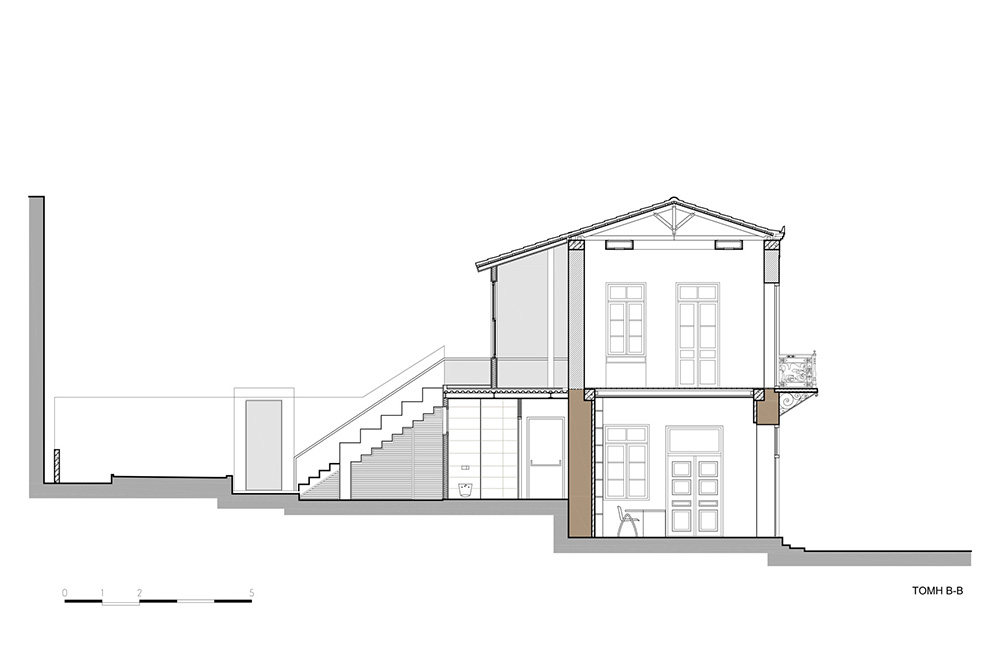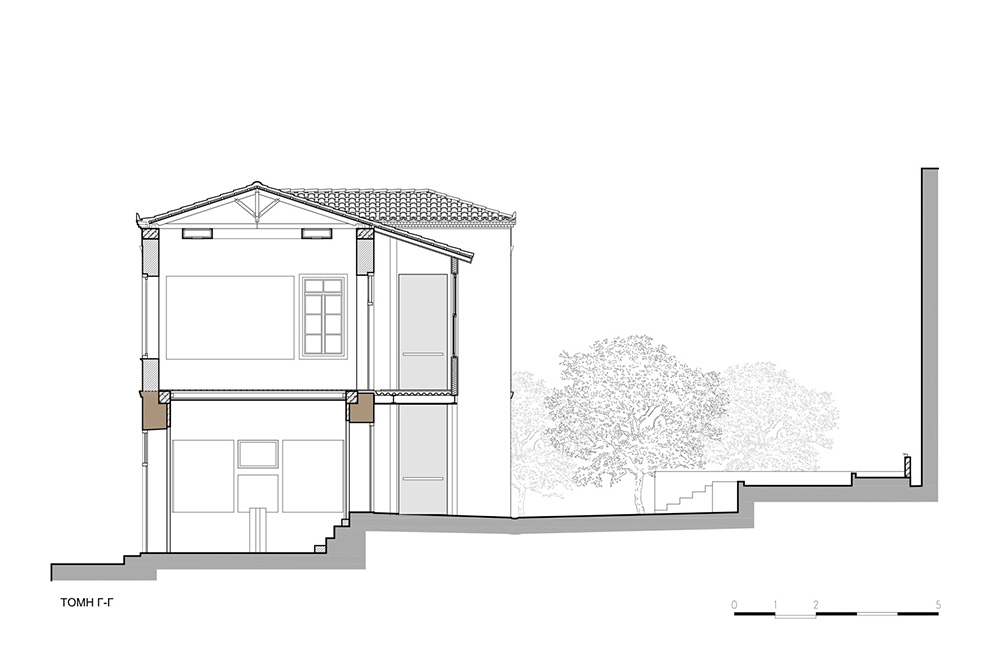
Agricultural Museum, Vasiliko, Evia, Greece
The dominant role in our proposed Museum of Agricultural Farming is played by the proper arrangement of outdoor space serving as an emblem of the Municipality's entire arable farmlands.
The outdoor space, in proportion to the arable farmlands in the Lelantine Plain, is organized by creating an irrigation line connected to the well and supplying with water an irrigation grid that divides the area in sections, which serve to host separate outdoor educational and cultural functions, including screenings/ lecturing section, a section for exhibiting farm tools and equipment, a section for cultivating suggested vineyard varieties as climbers, a section for cultivating cherries, and other plant cultivations supplementary to the region's vineyards, as well as a joint nursery area for educational and also commercial purposes.
Irrigation lines will be visualized in space by creating routes connecting these functional sections both on a ground level, as well as on an elevated level underlining movements on the ground, offering a full view of the area and connecting outdoor museum and educational activities with the building's museum and cultural uses. The overground route divides the space and provides it with a structure corresponding to the farming area, without depriving it of the perceptive and motional unity at the ground level. At the same time, the overground route has a symbolic function, essentially connecting the cultivation of the earth both with its occupancy, as well as with the creation of civilization atop its ground.
The upper floor of the building will be repaired while maintaining its typological elements, so that it can be turned into a museum section of winter life activities, in contrast, yet also supplementary, to the dominant life in farms during the other seasons of the year.
The building's ground floor will maintain its typological and morphological autonomy, and it will be repaired in order to be reused for hosting the Municipality's cultural events, and also for the purpose of hosting-housing the archive of Panos Geramanis concerning 1950's-1970's Greek folk music. The ground floor provides an exit to the back yard, through which it is connected to the Museum of Agricultural Farming; more important, however, is that it leads to the public space of the square and the junction of two main pedestrian streets of the settlement. The ground floor is held to be an extension of public space within the outline of the building.
(Collaraborator: V.Ganiatsas)


